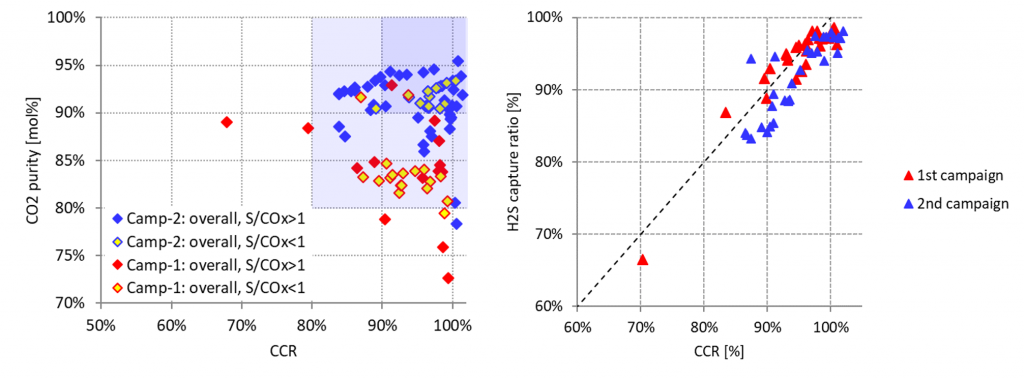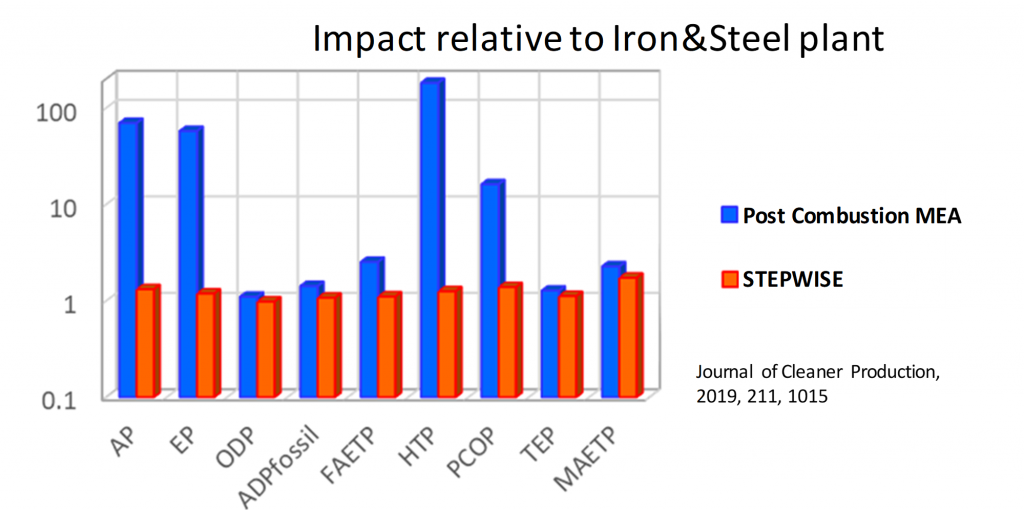The pilot testing represents the first time that three key components in the STEPWISE technology chain are coupled together: an industrial syngas source, syngas pre-processing with advanced water-gas shift, and CO and H2S clean-up with simultaneous CO2 removal in the SEWGS reactor. Great progress has been made on the required materials. The KATALCO 71-6 WGS catalyst is demonstrated suitable for applications involving BFG processing. Pilot operation confirmed operating at a reduced steam consumption without loss of activity or significant by-product formation in the presence of 15 ppm H2S. Reduction in steam requirement significantly enhances the process efficiency and economics and is an important driver for the commercialization of the SEWGS technology.
The HT-PSA CO2 adsorbent was shown to separate CO2 – H2 with the targeted single-column efficiency of >90% CO2 removal, >90% CO2 product purity at <1 mol steam per mol CO2 removed. Simultaneous deep desulphurization of the H2 product was demonstrated. The sorbent was produced using industrial procedures and equipment, surpassing the targeted production rate of over 10 tonne/day. This is the first time that this amount of sorbent has been produced by the principal manufacturer in Europe. Pilot testing showed modest temperature effects under adiabatic conditions during the SEWGS cycle, allowing increased flexibility for the optimum column temperature and the CO inlet content. Furthermore, pilot operation showed that the high temperature valves are not critical for the commercialization of the technology.

The techno-economic analysis was based on the design and costing of a full-scale system at +/- 30% accuracy. It shows that STEPWISE technology doubles the CO2 avoidance rate compared to amine-based post combustion CO2 removal under the assumption of zero fuel import, at a SPECCA of 1.95 MJ/tCO2 and a CO2 avoidance costs for the Iron and Steel plant of 32.4 €/tCO2. An overall CO2 avoidance rate of 37.2% is reached for the simple integration of the STEPWISE technology, treating the residual steel gasses to the powerplant. This simple integration is an early implementation option for initial decarbonization of the power plant, enabling future decarbonization routes to be implemented later. Without importing external sources of energy, an intensified integration of STEPWISE technology into the steel making process allows for avoidance rates up to 74%.
Moreover, the first detailed relative Life Cycle Analysis of the STEPWISE technology indicates significant reduced overall environmental impacts compared to post-combustion amine technology, and future directions to lower environmental impact further.

